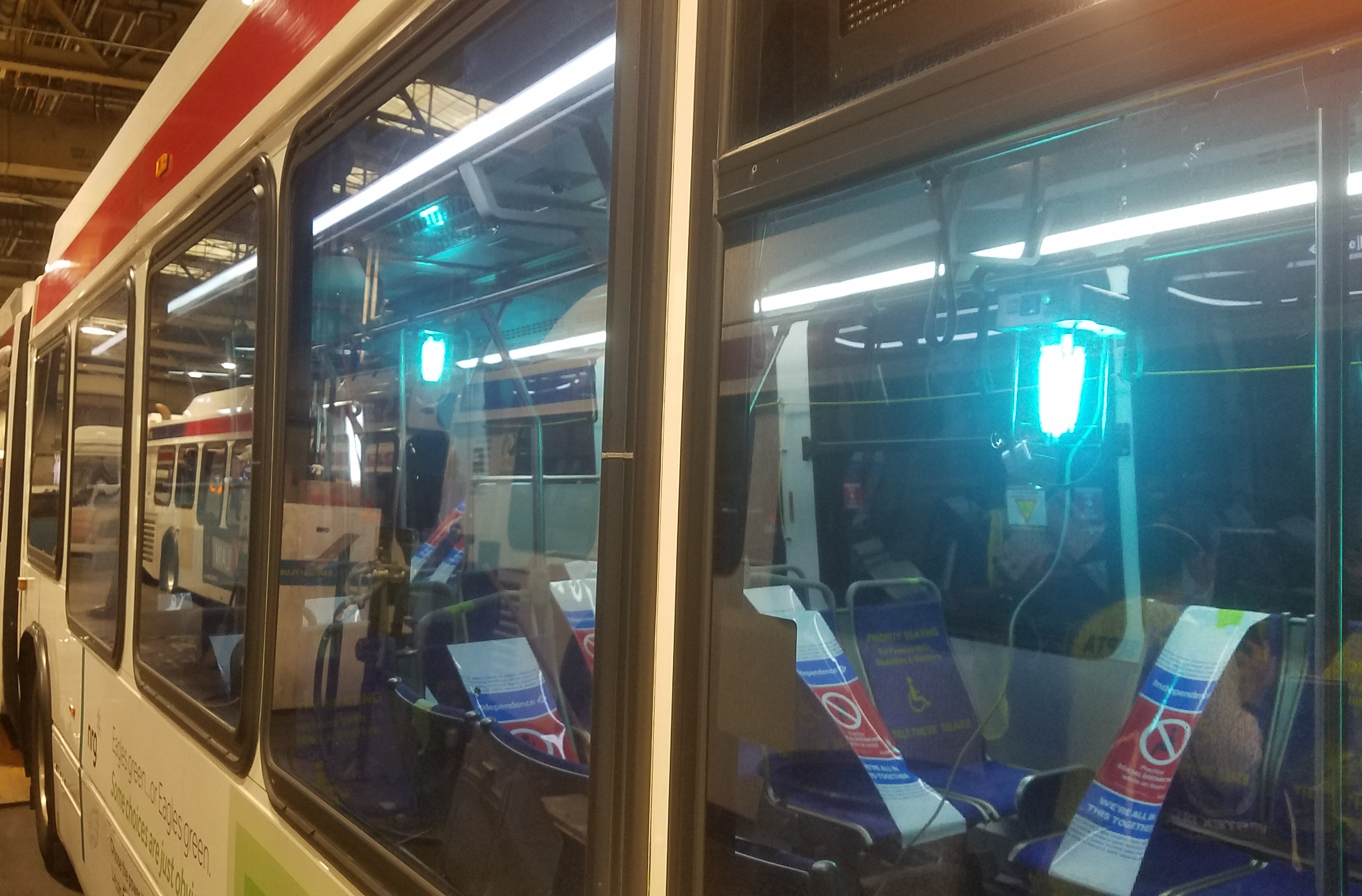
By Kevin Lorcheim
Transportation providers are seeing the world in a different way since the SARS-CoV-2 virus started affecting our lives. While germaphobes have been planning for this for a while, the rest of us are now looking at every handrail, doorknob, public space, and human being as a potential vector for infection. While some activities such as concerts and sporting events have been suspended or modified to reduce the risk of creating a “superspreader” event, public transportation has largely remained open. Bus and motorcoach transportation have a higher risk level than most due to the high passenger levels, connection to different geographic populations, high passenger turnover rate and crowd density within the vehicles. Keeping passengers and employees safe is a challenge that takes a concerted effort involving both adherence to procedures and additional sanitation tools.
Since 2001, ClorDiSys has provided high-level disinfection solutions for some of the world’s most critical spaces, from food and pharmaceutical manufacturing spaces to laboratories working with the influenza strain from the last major pandemic of 1918.
This year, we have been advising businesses on how best to protect themselves during the pandemic, offering suggestions on improving both their workflows and providing new tools and technologies to enhance their sanitation efforts:
Ultraviolet light
 One of the simplest and most effective tools being implemented to combat SARS-CoV-2 is ultraviolet light, and it is well suited for the demands of the public transportation industry. Ultraviolet light (UV-C) is a fast acting, chemical-free disinfection method that is both simple-to-use and highly effective. Studies have shown UV-C to quickly disinfect SARS-CoV-2 as well as more traditional pathogens such as influenza. Within buses and other mass transportation vehicles, UV-C can be used to treat surfaces and/or the air to reduce the risk of transmission between passengers. Systems are as simple to use as a lamp within your home, right out of the box. Ultraviolet light is being used extensively by EMS companies across the country as a means to disinfect their vehicles.
One of the simplest and most effective tools being implemented to combat SARS-CoV-2 is ultraviolet light, and it is well suited for the demands of the public transportation industry. Ultraviolet light (UV-C) is a fast acting, chemical-free disinfection method that is both simple-to-use and highly effective. Studies have shown UV-C to quickly disinfect SARS-CoV-2 as well as more traditional pathogens such as influenza. Within buses and other mass transportation vehicles, UV-C can be used to treat surfaces and/or the air to reduce the risk of transmission between passengers. Systems are as simple to use as a lamp within your home, right out of the box. Ultraviolet light is being used extensively by EMS companies across the country as a means to disinfect their vehicles.
Surface treatment
Being a liquid-free, chemical-free disinfection method, UV-C compares favorably to liquid-based disinfection methods that are wiped, sprayed, or fogged throughout the bus. Liquid chemicals need to be stored safety, mixed properly, and typically have a limited shelf-life once opened. When applied, surfaces need to be kept wet for a certain amount of time, then dry completely before it is safe to re-enter and continue use of the bus. UV-C does not have those drawbacks, as there is no chemical being used, and germicidal lamps typically last thousands of hours before needing to be replaced. Treatment times are typically 1-5 minutes long depending on the size and shape of the area being disinfected, and as a dry disinfection method the bus can be re-entered immediately upon the lights turning off. This reduces the turnaround time and may allow for more frequent disinfection being the “out-of-service” time is much less.
Air treatment
Many enclosed, densely populated environments also look to control airborne pathogens. Some environments employ high-end filtration units utilizing MERV or HEPA filters to capture particles in the HVAC system. Installing a MERV or HEPA filter to an existing system adds resistance to air flow, meaning your system will either need to work harder to maintain flow, or air flow will be reduced. Installing UV-C disinfection systems into an HVAC system destroys rather than captures particles, and doesn’t strain the existing HVAC system as an added filter would. UV-C lamps installed into the existing HVAC can run continuously to disinfect the air as it passes through the system.
Masks and shared items
While most of the focus is on the bus and motorcoach, disinfecting commonly used items within your operation should also be considered. Electronics that typically cannot become wet and disinfected by traditional wipes and sprays are able to be disinfected by UV-C. Whether it is masks, pens, tablets, tools, communication devices, or other smaller items, UV-C can quickly disinfect them before they are passed on to another person.
The very thought of being in close or confined quarters with other passengers is cause for hesitation and potential panic. Transit agencies around the country have responded to this public health emergency by announcing expanded cleaning schedules, dispensing hand sanitizer, and equipping drivers with antiseptic wipes. These expanded cleaning schedules usually just involve wiping down the areas people mostly touch with a disinfectant as wiping all the surfaces would take a lot of time and labor. The utilization of ultraviolet light provides quicker, better disinfection coverage than a manual spray and wipe. UV-C has been leading the fight against SARS-CoV-2, helping control its spread on surfaces and in HVAC systems.
Kevin Lorcheim is senior manager for ClorDiSys Solutions. Please visit www.clordisys.com for more information.
